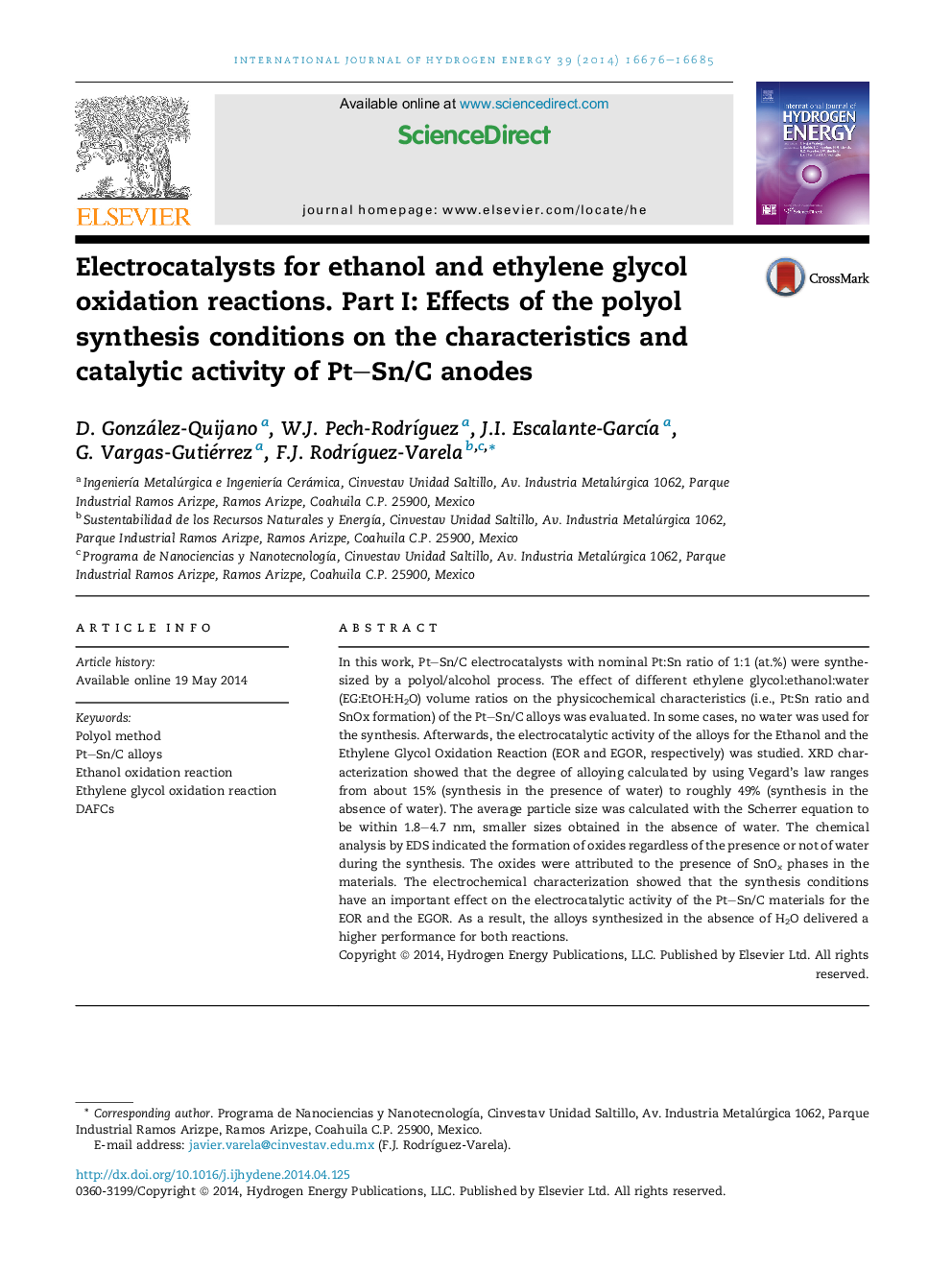| کد مقاله | کد نشریه | سال انتشار | مقاله انگلیسی | نسخه تمام متن |
|---|---|---|---|---|
| 1281009 | 1497480 | 2014 | 10 صفحه PDF | دانلود رایگان |

• Pt–Sn/C catalysts synthesized by a polyol/alcohol/water process.
• Formation of oxides with or without water.
• The anodes have been evaluated for the EOR and the EGOR.
• The Pt–Sn/C catalysts showed higher catalytic activity than Pt/C.
• Higher catalytic activity of Pt–Sn/C alloys synthesized without H2O demonstrated.
In this work, Pt–Sn/C electrocatalysts with nominal Pt:Sn ratio of 1:1 (at.%) were synthesized by a polyol/alcohol process. The effect of different ethylene glycol:ethanol:water (EG:EtOH:H2O) volume ratios on the physicochemical characteristics (i.e., Pt:Sn ratio and SnOx formation) of the Pt–Sn/C alloys was evaluated. In some cases, no water was used for the synthesis. Afterwards, the electrocatalytic activity of the alloys for the Ethanol and the Ethylene Glycol Oxidation Reaction (EOR and EGOR, respectively) was studied. XRD characterization showed that the degree of alloying calculated by using Vegard's law ranges from about 15% (synthesis in the presence of water) to roughly 49% (synthesis in the absence of water). The average particle size was calculated with the Scherrer equation to be within 1.8–4.7 nm, smaller sizes obtained in the absence of water. The chemical analysis by EDS indicated the formation of oxides regardless of the presence or not of water during the synthesis. The oxides were attributed to the presence of SnOx phases in the materials. The electrochemical characterization showed that the synthesis conditions have an important effect on the electrocatalytic activity of the Pt–Sn/C materials for the EOR and the EGOR. As a result, the alloys synthesized in the absence of H2O delivered a higher performance for both reactions.
Figure optionsDownload as PowerPoint slide
Journal: International Journal of Hydrogen Energy - Volume 39, Issue 29, 2 October 2014, Pages 16676–16685